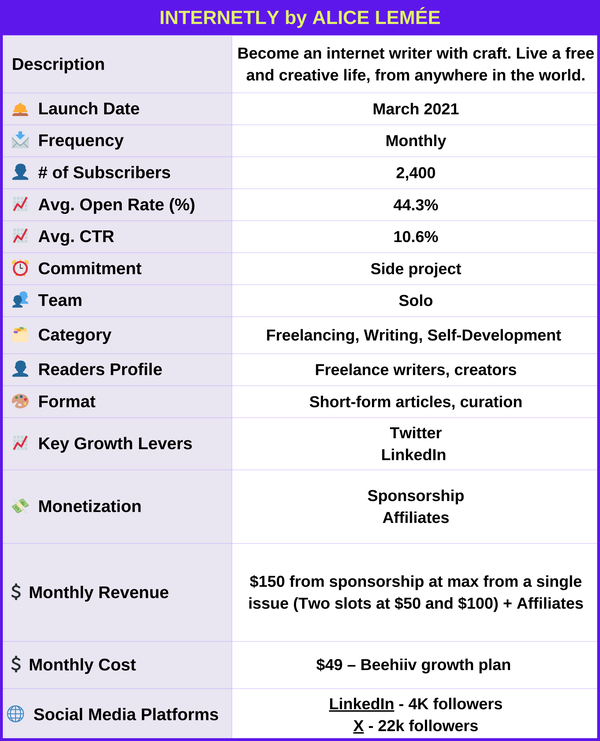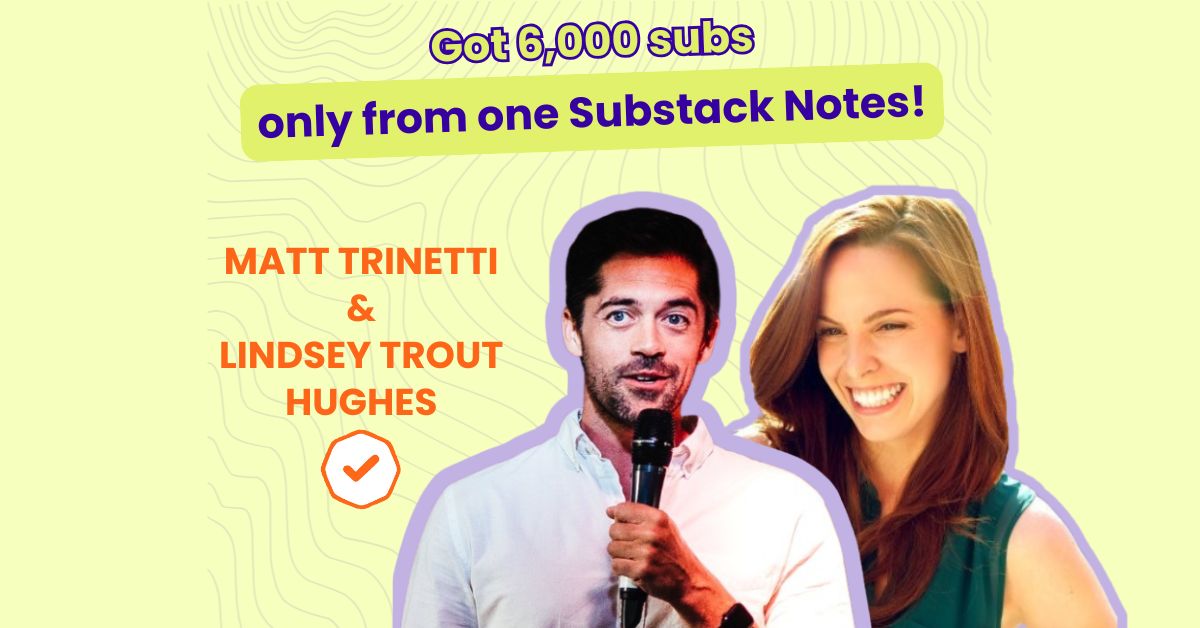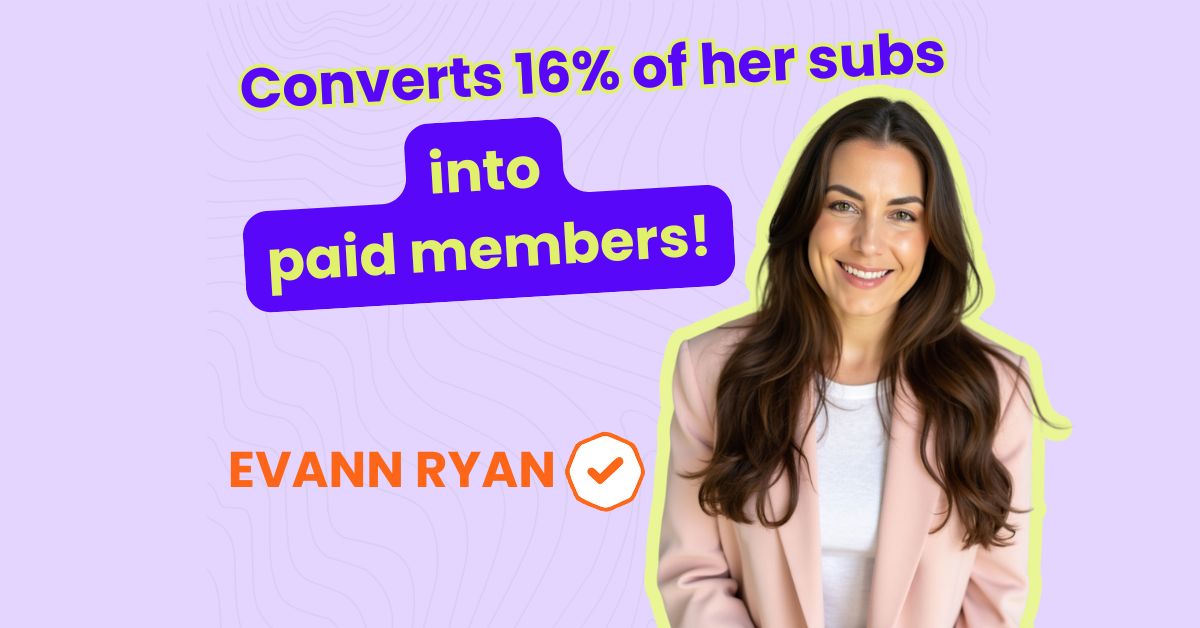Interview Date: June 16, 2024
Table of Content
- Meet Alice Lemée
- Newsletter Identity Card
- Newsletter Toolkit
- What consistency means
- Why she stop publishing consistently
- The impact of inconsistent publishing
- Biggest challenges to stay consistent
- What works best to stay consistent
MEET THE CREATOR
We talk about how to stay consistent all the time, but we rarely touch on what it really means and what happens if we don’t stay consistent.

Alice Lemée (pronounced ah-leece) is a part-time digital nomad and full-time freelance writer who specializes in ghostwriting content for creators, founders, and entrepreneurs. She writes everything from LinkedIn posts to long-form articles and YouTube scripts.
Besides client work, she also manages her own projects on the side, including her newsletter, Internetly.
I’ve been following Alice’s newsletter for a long time and I love it. She has a gift for playing with words. When I noticed she was not always consistent with her publishing schedule, I couldn’t help but wonder how that works for her.
So, I reached out and asked her to take us through all those periods of regular and irregular publishing. We’re lucky that she accepted and transparently shared her experience.
To be a bit more concrete, in our discussion today, we talked about:
- What should be the definition of consistency
- Why she took a break from writing her newsletter and what pushed her to publish again
- The impact of inconsistent publishing on her newsletter growth and monetization
- The biggest challenges of staying consistent and how she deals with them
As Alice mentioned, how to approach consistent publishing varies depending on the type of newsletter you’re running and your objectives. But I believe that today’s interview will be helpful as an honest take on consistency from the perspective of a writer exploring creativity.
Let’s dive in!
NEWSLETTER IDENTITY CARD

TOOL STACK
- ESP → Beehiiv*
- Writing → Google Docs, 750 words
- Task Management → Notion
- Curation & Note taking → Apple Notes
- Website → Webflow
- Sponsorship → Passionfroot
- Payments → Novo
6 QUESTIONS ON CONSISTENCY
You started Internetly in March’21 as a weekly newsletter and continued writing until October’21. Then, you took a one-year break and returned to writing with changing frequencies.
1. I’d like to start with your definition of consistency in newsletter publishing. Is it solely related to publishing frequency or do you think that it’s a wider concept than this?
This is a tough one. The newsletter world is really defined by consistency — and it’s true that once you take your newsletter seriously by publishing frequently, you do sense a shift in more subscribers coming in.
It depends on who you are as the creator of the newsletter. If you’re a business person, catering to a hyper-specific audience, solving one specific problem, then yeah – consistency is key here.
But if you’re a writer who is just exercising and exploring their creativity, there is a difference in “consistency.” Consistency can be writing every day – and that leads to you publishing a newsletter.
“This is why newsletters are so hard for certain creatives to maintain — because it goes against the natural ebb and flow of creativity, and instead pushes for a machine-like, cookie-cutter level of output.”
And that’s honestly why I took a long break from publishing after however many months of writing a newsletter every week.
2. What made you stop publishing your newsletter consistently and then pushed you to come back?
There were a plethora of factors. I mean it stopped being fun at first. It was so much pressure. I felt like I was putting out stuff that I didn’t really resonate with or enjoy. And I know it’s up to the audience to evaluate your work, (and not you), but there’s a certain baseline of quality you want to uphold.
I also write full-time for a living. So sometimes it’s really hard to go from writing in one Google Doc to another. Sometimes you just want to go completely offline and not stare at a screen for at least 15 business days. I needed to just disconnect.
And that ultimately helped with the writer’s block — if you live your life, and pay attention to what you observe, and start collecting notes of interesting crumbs and conversations, you start to fill in your reservoir of ideas again.
What made me come back to the newsletter wasn’t the drum of productivity or the bait of sponsors. It was like, I had experienced some major life shit, and thought: Does anyone else feel this way? Can I write the piece that I would’ve done anything for a few years ago? And does maybe someone, somewhere, need it too, and I can help them navigate what I had to go through?
That’s what pushed me to publish again — to use that vulnerability to connect with and hopefully help others.
3. How did the period you wrote inconsistently impact your newsletter growth and monetization?
Honestly, it’s hard to say. Obviously, everything stagnates.
But the thing is I’m semi-consistent with posting on other platforms — namely Twitter and LinkedIn — so I’ll still get new subscribers all the time (more like a trickle, not a huge flow).
And the sponsors keep coming in, too. I’ve had sponsors reach out just because they love my writing, and not because they see my audience as a percentage of demographics that could match their KPIs.
Granted, I’ve also had sponsors bow out after they see my inconsistent output. Which is totally understandable! But as of now, my newsletter isn’t really a revenue stream…so it’s not a big deal if someone pays or doesn’t.
The good thing about Beehiiv* though is that the content lives on that website. So it’s easy for someone to find my stuff and just go on a binge if they want. That gives them a good idea of who I am, and that acts like a living breathing portfolio.
It’s strong and helps compensate for the fact that I’m not super consistent.
4. What are your biggest challenges to staying more consistent?
Client work! Lol. That is my single biggest bottleneck. I can’t stare at a screen or use my brain deeply for more than four hours a day. After that the quality plummets and I grow resentful.
“I’m also a big believer in the fact that if you push yourself to 110%, it will take you days to recover — shooting your productivity in the long run.
You’re better off pushing yourself to 75%, then just stepping away, so you come back to the screen the next day feeling motivated and creative again.”
So yeah — the client work is intense at the moment (which I’m super grateful for!) but sometimes the last thing I want to do is keep writing after I’ve been at my desk for 50% of my day. You might as well give a chimp a keyboard because that’s about as useful as I feel after those 4 hours are up.
5. What works best for you to handle those challenges and stay more consistent?
I always like to try and make it personal. Like okay, I’m not publishing — why? Because of client work. What does that mean? I’m spending my time and energy advancing someone else’s agenda, goals, dreams, and business ahead of mine. And that kind of sucks to realize, and gets me a bit like, damn, I want to put myself first too.
“So that helps: Just be super upfront about what you’re doing and how it impacts your dreams.”
I also find that writing with zero attachment to the outcome really unlocks a lot of creativity and golden nuggets. I like to use 750 Words and I just freely write about whatever comes to mind. It seems a bit trite at first but it’s important to just get into the habit and get to know yourself.
You actually have a lot of ideas stored inside of you, but you prevent them from coming out because you try to reach into your brain with a flashlight and go, “Okay ideas, it’s time for you to come out and make me money and make me look cool and impressive.” And of course they’re going to hide from you.
Reminds me of Elizabeth Gilbert’s quote:
“But to yell at your creativity, saying, “You must earn money for me!” is sort of like yelling at a cat; it has no idea what you’re talking about, and all you’re doing is scaring it away, because you’re making really loud noises and your face looks weird when you do that.”
Instead, just open the door and go, well, you should come out, but no pressure. This is when the magic happens.
6. If you had a chance to start over, would you try to stay more consistent and if yes what would you do differently to achieve better consistency? Do you have any plans for the future?
It’s tough to say. Honestly, if I could start over, I’d just stay at Substack because there’s less of a marketer vibe (that you must publish once a week vibe), and instead, it caters to the creatives and writers.
“Plans for the future: I’m getting a bunch of sponsors (which is shocking considering how much I’m not publishing consistently) so I’d like to create more stuff.
The only problem is I don’t want to ever create for a sponsor — it’s to create from within.”
I think in the future I’d like to stop editing my own work so damn much. As professional copywriters and ghostwriters we agonize over every word and if they sound like our client or if it’ll please the algorithm. But a newsletter doesn’t have to be this overly-polished masterpiece.
A lot of time people are just going there to feel less alone, to have their minds expanded, to learn something new. So the goal is to create more of that. 🙂
3 Popular Issues from Internetly
- I Just Finished My Second Year as a Freelance Writer. Here’s What Happened
- Why We Break Our Own Hearts
- Are Six Figure Freelancers Actually Successful?
Where to find Alice Lemée
*indicates affiliate links


